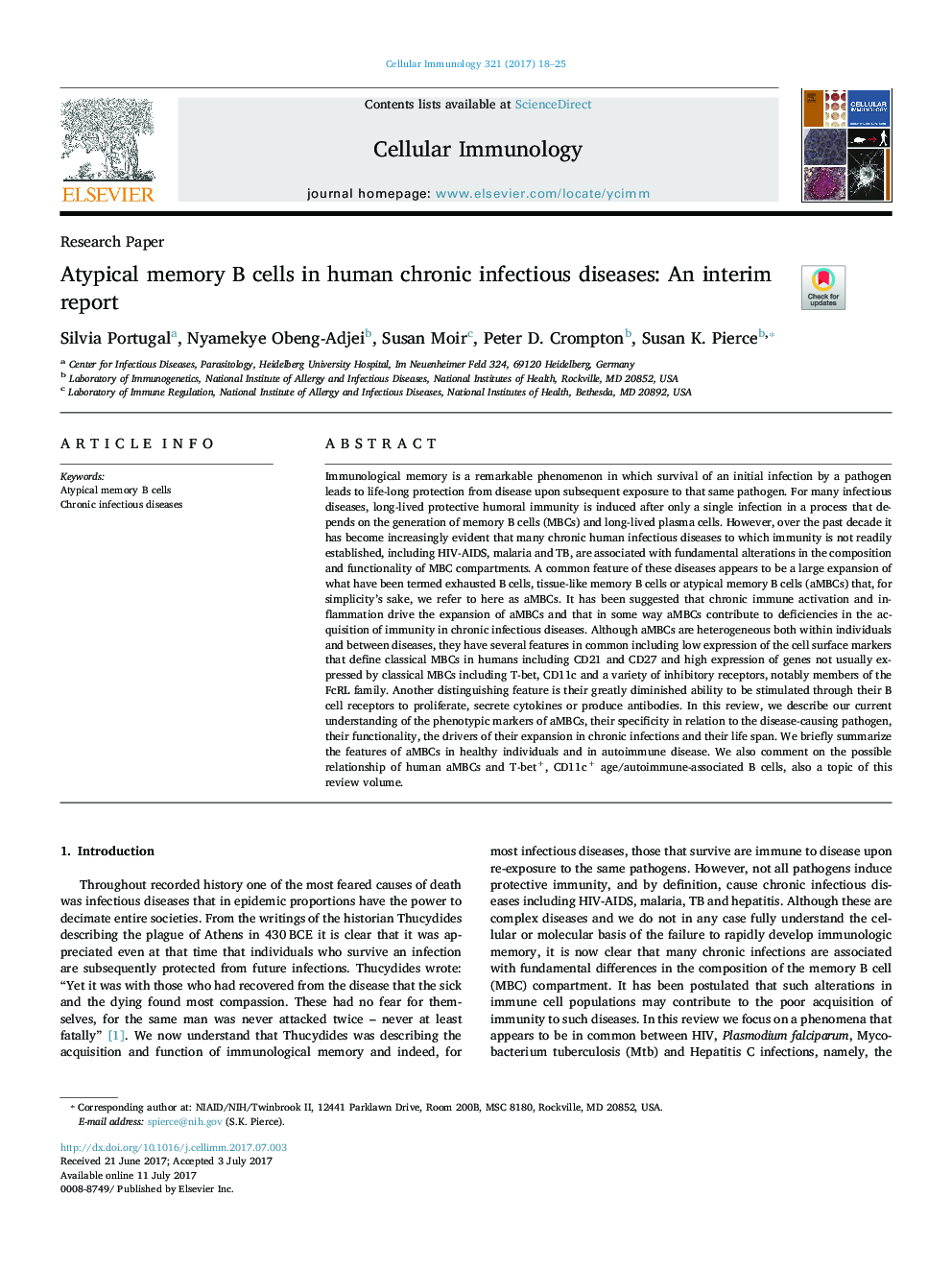| کد مقاله | کد نشریه | سال انتشار | مقاله انگلیسی | نسخه تمام متن |
|---|---|---|---|---|
| 8463637 | 1549378 | 2017 | 8 صفحه PDF | دانلود رایگان |
عنوان انگلیسی مقاله ISI
Atypical memory B cells in human chronic infectious diseases: An interim report
ترجمه فارسی عنوان
سلول های بتای بیتی در بیماری های عفونی مزمن انسانی: یک گزارش موقت
دانلود مقاله + سفارش ترجمه
دانلود مقاله ISI انگلیسی
رایگان برای ایرانیان
موضوعات مرتبط
علوم زیستی و بیوفناوری
بیوشیمی، ژنتیک و زیست شناسی مولکولی
بیولوژی سلول
چکیده انگلیسی
Immunological memory is a remarkable phenomenon in which survival of an initial infection by a pathogen leads to life-long protection from disease upon subsequent exposure to that same pathogen. For many infectious diseases, long-lived protective humoral immunity is induced after only a single infection in a process that depends on the generation of memory B cells (MBCs) and long-lived plasma cells. However, over the past decade it has become increasingly evident that many chronic human infectious diseases to which immunity is not readily established, including HIV-AIDS, malaria and TB, are associated with fundamental alterations in the composition and functionality of MBC compartments. A common feature of these diseases appears to be a large expansion of what have been termed exhausted B cells, tissue-like memory B cells or atypical memory B cells (aMBCs) that, for simplicity's sake, we refer to here as aMBCs. It has been suggested that chronic immune activation and inflammation drive the expansion of aMBCs and that in some way aMBCs contribute to deficiencies in the acquisition of immunity in chronic infectious diseases. Although aMBCs are heterogeneous both within individuals and between diseases, they have several features in common including low expression of the cell surface markers that define classical MBCs in humans including CD21 and CD27 and high expression of genes not usually expressed by classical MBCs including T-bet, CD11c and a variety of inhibitory receptors, notably members of the FcRL family. Another distinguishing feature is their greatly diminished ability to be stimulated through their B cell receptors to proliferate, secrete cytokines or produce antibodies. In this review, we describe our current understanding of the phenotypic markers of aMBCs, their specificity in relation to the disease-causing pathogen, their functionality, the drivers of their expansion in chronic infections and their life span. We briefly summarize the features of aMBCs in healthy individuals and in autoimmune disease. We also comment on the possible relationship of human aMBCs and T-bet+, CD11c+ age/autoimmune-associated B cells, also a topic of this review volume.
ناشر
Database: Elsevier - ScienceDirect (ساینس دایرکت)
Journal: Cellular Immunology - Volume 321, November 2017, Pages 18-25
Journal: Cellular Immunology - Volume 321, November 2017, Pages 18-25
نویسندگان
Silvia Portugal, Nyamekye Obeng-Adjei, Susan Moir, Peter D. Crompton, Susan K. Pierce,
